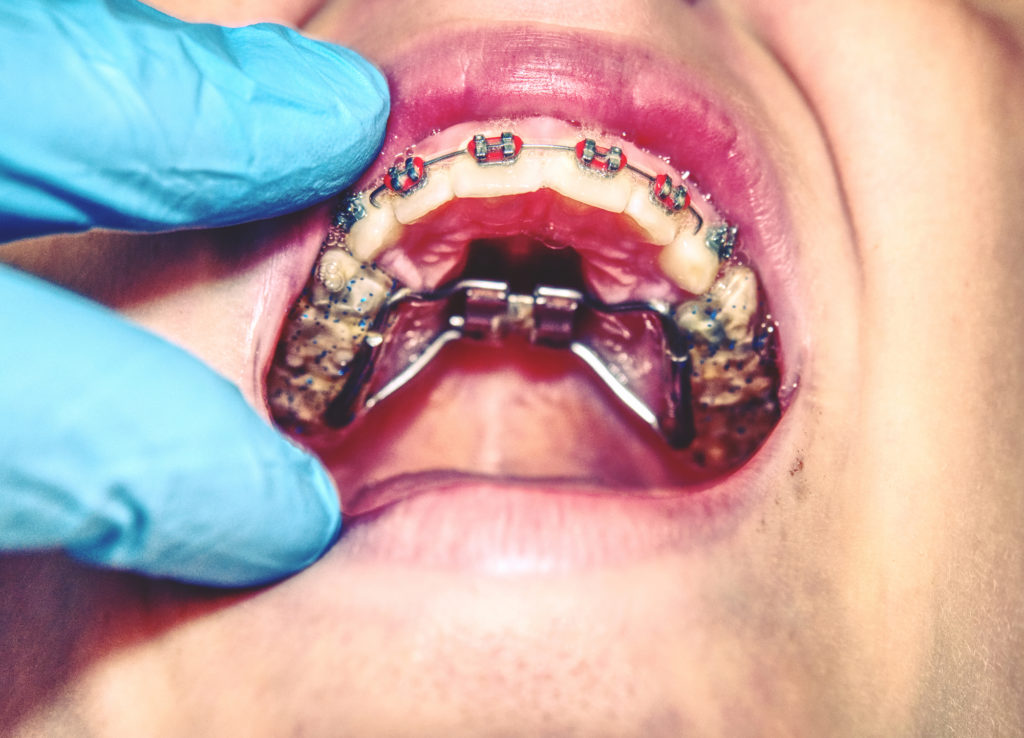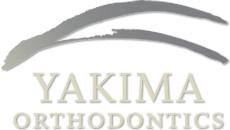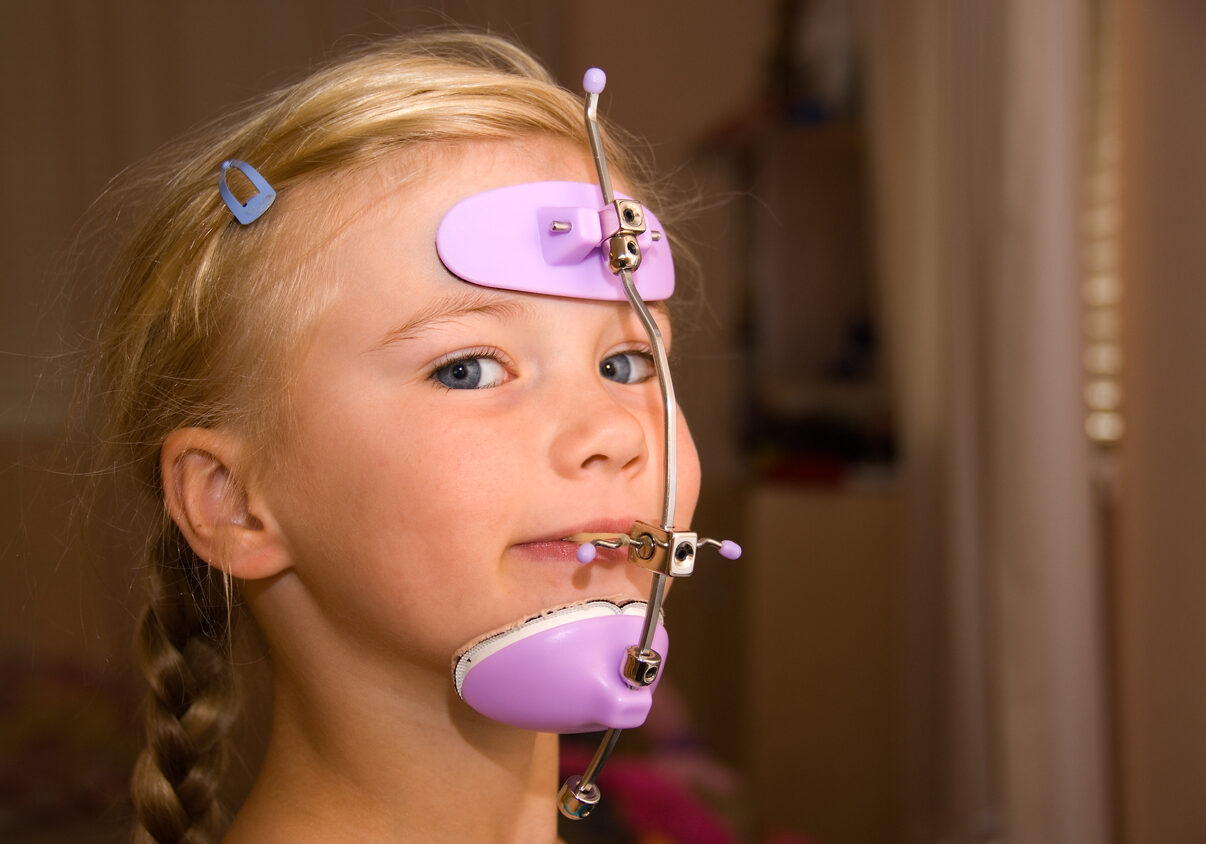At Yakima Orthodontics, we have many options for patients who want a beautiful smile.
Yakima orthodontist Dr. Joseph Parker creates beautiful smiles through orthodontic services. Whether you're a teen or adult, we offer a wide selection of braces to help you accomplish your goals of straighter teeth, a better bite, and a healthier, gorgeous smile.
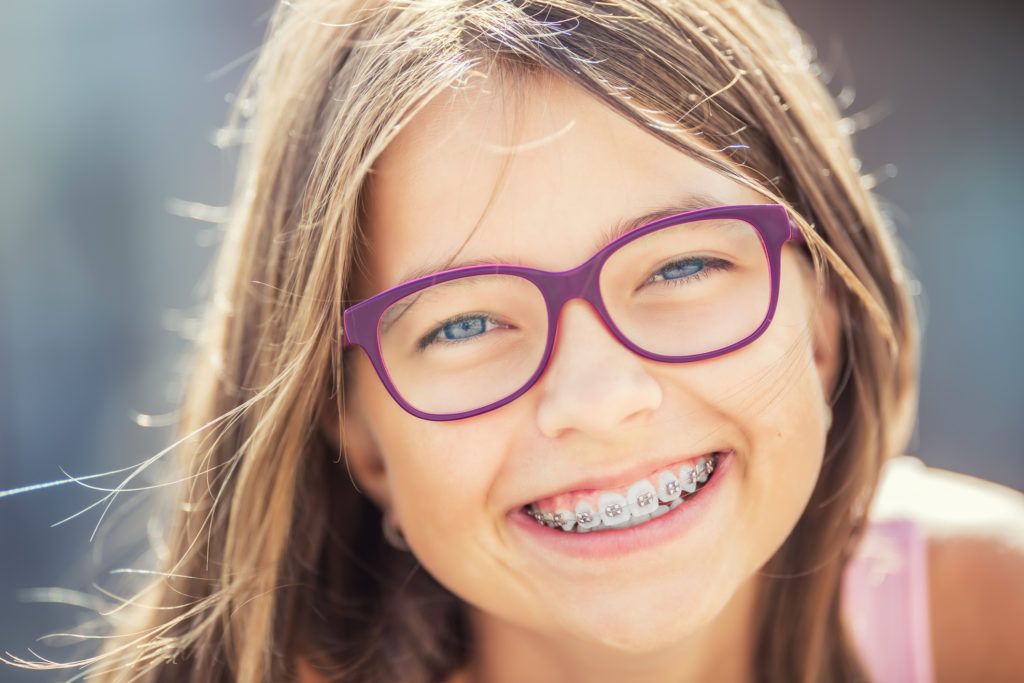
We Can Help You Love Your Smile
Invisalign/Sterling Clear Aligners
Invisalign/Sterling Clear Aligners is an effective, gentle and invisible way to straighten your teeth. Learn more.
Appliances
It may be necessary to incorporate different appliances to fix problems like an under or crossbite.
Braces
The need and desire to straighten teeth has a long history. Evidence of attempts to correct crooked teeth and achieve more appealing smiles have been noted in ancient Egypt. However, it wasn’t until the 1900s that we began using the term “braces” for the devices created to help bring teeth into better alignment.
While it took centuries to perfect the process of straightening teeth with the use of metal wires bonded to the teeth, today, braces are viewed almost as a rite of passage for modern teens from all walks of life. The method, now perfected, has proven to be highly effective for helping teens — and adults alike, achieve straighter smiles.
Braces technology has evolved other the years, allowing for strong bonding materials, barely visible options, and a little discomfort in the process of straightening teeth.
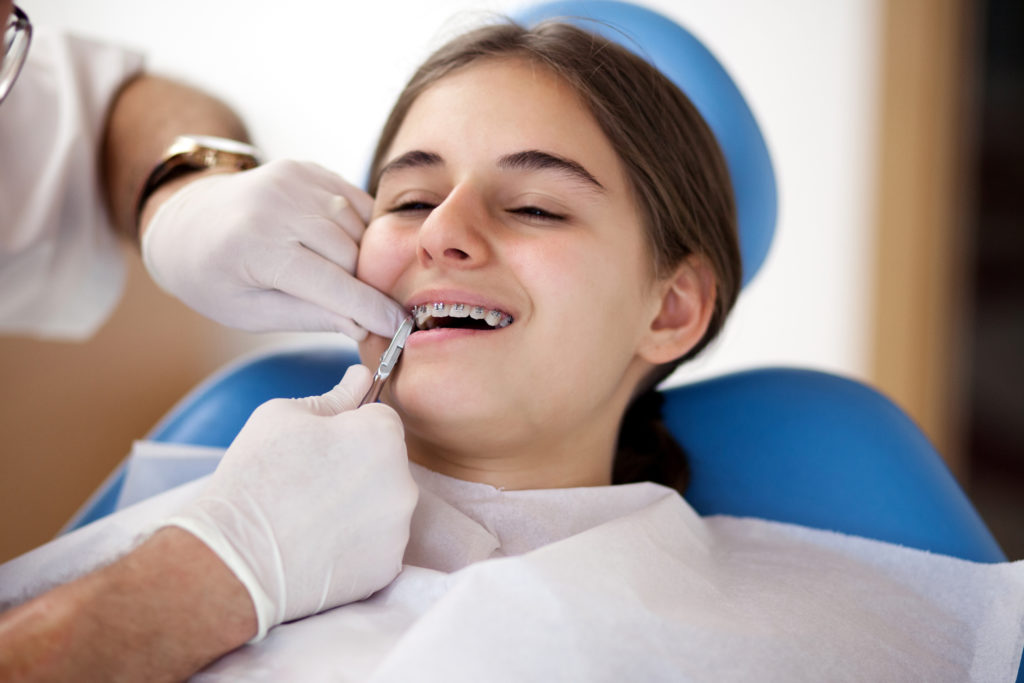
How Braces Work
Braces are comprised of many components all working together to help you achieve a healthier, straighter, and more beautiful smile. Depending on the type of braces, these parts may include:
- Brackets: Made of metal or ceramic and bonded to each, individual tooth.
- Archwires: This is a thin metal wire running through the brackets. This wire is what applies pressure to your teeth to encourage them to shift into proper alignment. Precise bends in the archwire can help to achieve specific adjustments, such as encouraging a tooth too far forward to move back, into alignment with the teeth surrounding it or even shifting a twisted tooth so that it faces the way it should.
- Elastic ties: As the name implies, these are elastic rings that hold the archwires to the individual brackets. These ties are changed during each follow-up visit to as your orthodontist makes adjustments to encourage specific results.
- Rubber bands: Primarily used to help adjust bite alignment issues (underbites, overbites, etc.), you may use rubber bands attached via hooks attached to your brackets to create added pressure necessary to shift the jaw into proper alignment.

These elements work in tangent to apply pressure in precise locations within your mouth, shifting your teeth into alignment. Depending on the severity of your misalignment, crooked teeth, gaps, overbite, or underbite, it could take longer or shorter amounts of time to make the required adjustments.
What To Expect With Braces

Because the process of straightening your teeth, closing a tooth gap or correcting an overbite or underbite can take time, it’s natural to want to understand the overall braces process.
First Impressions
To begin, our orthodontist, Dr. Joseph D. Parker, takes an impression of your upper and lower arch on your first braces evaluation visit, and may do so again as you age and as the time approaches for you to actually begin treatment. To get an impression of your teeth, you’ll bite down into a tray of “goo,” called alginate, and hold it long enough for an impression.
Then, we use the alginate impression to form into a three-dimensional mold of your smile based on the impression. We use this model of your smile to formulate an effective treatment plan and to understand how best to progress with perfecting your smile.
Dental Cleaning Before Treatment
Before you get braces, you’ll need to have an extensive dental cleaning. We’ll provide you with pointed instructions about the importance of outstanding oral hygiene during your orthodontic treatment. This includes brushing your teeth with electric and manual toothbrushes and flossing daily. We strongly encourage you to receive regular dental cleanings at six-month intervals throughout your orthodontic treatment.
Types of Braces Impact Treatment
The types of braces you choose also impact how quickly your teeth will move into place. Most people feel some initial soreness in the jaw following the initial procedure and after each subsequent adjustment. This soreness usually lasts only a few days and can easily be treated with over-the-counter medications if they are even necessary at all.
While many patients will only need braces, there may be some occasions when other dental appliances are warranted to supplement the treatment to reposition your teeth, in addition to braces. We will discuss this with you should it become necessary.
Braces For Teens & Adults
While most people consider braces as mostly only reserved for teens, adults sometimes need — or desire braces too. Whether it’s a matter of correcting problems not addressed when they were teens, the result of auto accidents, or countless other reasons, both teens and adults can benefit from orthodontic treatment.
For both teens and adults, orthodontic treatment is a coordinated effort between your family dentist and Dr. Parker who work together to deliver a healthy smile as the ultimate goal for both types of treatment.
Teens
Orthodontic treatment for teens often begins much earlier than the teenage years. Many patients receiving braces as teens begin seeing our orthodontist at much earlier ages for assessments and to determine when treatment should begin.
Some children see Dr. Parker for the first time before kindergarten based on the recommendation of their general dentists. Our orthodontist can begin exploring how the bone is developing in a young child and whether orthodontic treatment will be a possible recommendation for the child as they grow.
The sooner you begin seeing an orthodontist for a child likely to need braces in the future, the more time the orthodontist has to explore structural changes taking place with a child’s smile. This will help create more effective treatment when the time comes.

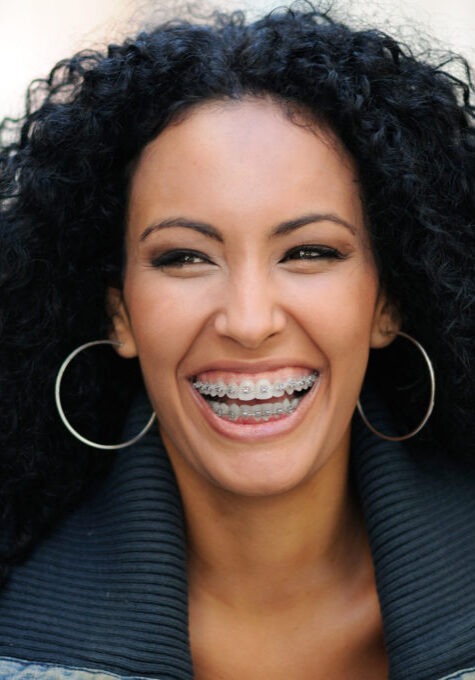
Adults
Adults consider braces for many reasons. For many adults, braces help them to create confidence lost from a slight gap in the teeth that render them unwilling to smile or embarrassed about their smile.
Other adults want to correct a crowded smile after their wisdom teeth grow in. Still, others have discrete teeth in an automobile, work or sports accidents that injured their jaw and creating misalignments that require correction. When this occurs, braces offer a viable and healthy solution to your problems and concerns.
Orthodontic treatment for adults may take longer than the average orthodontic treatment for teens. This is because teens are still growing, and their bones are more malleable than adult bones. Otherwise, the treatment for adults is identical, as far as the mechanics of treatment, to that of teens who have braces.
Types of Braces
There are three main types of braces available today, each one offering unique strengths and weaknesses to those who choose them.
Metal Braces
Perhaps the most cost-effective option for orthodontic treatment, traditional metal braces are highly effective for moving teeth. With all the technological advances of the last 120+ years, the mechanics of braces have remained largely unchanged. Simply put, they are very effective at what they do.
While they are the most noticeable type of braces, younger teens enjoy the ability to use colored bands for a touch of fun in the process and the opportunity to choose the color allows them to express themselves. Plus, many teens simply appreciate the opportunity to have a “voice” in the process that colored bands allow.

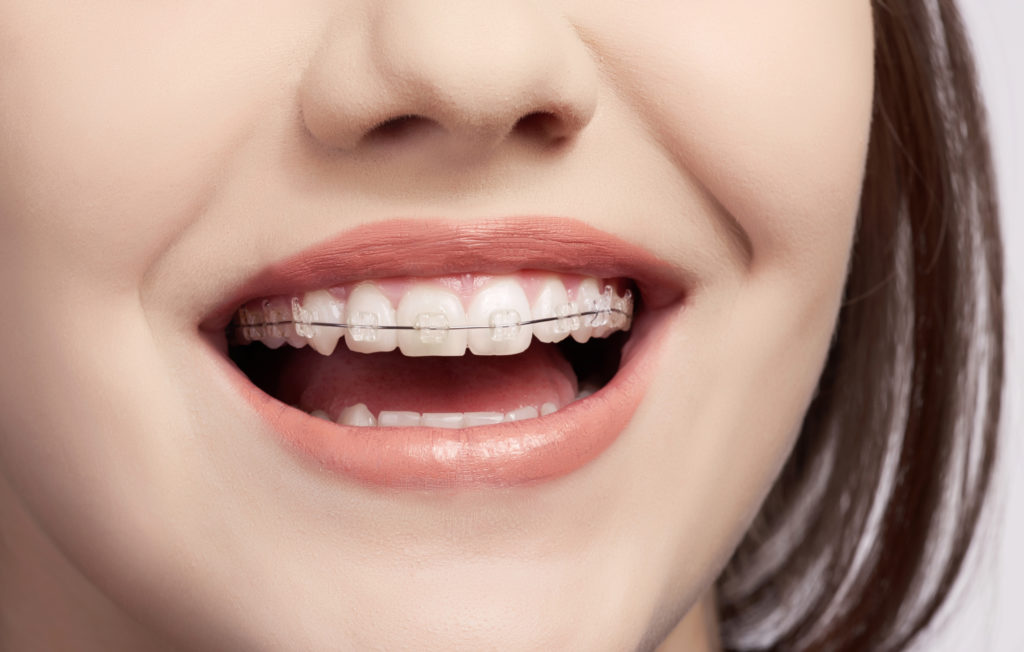
Clear Braces
Clear braces, also called ceramic braces, deliver a discrete teeth straightening or alignment treatment experience. They may cost slightly more than metal braces, but offer benefits many consider well worth the investment. Because clear braces are less noticeable than metal braces, they are the clear choices for adults (or teens) needing braces who don’t want to wear traditional wire-and-bracket orthodontic hardware.
Though they are not always “clear,” some are tooth-colored. Instead, they are consistently made of ceramic. Because they are tooth-colored, they are less visible. However, clear braces and ceramic braces still contain a wire to connect the braces.
However, clear braces have some drawbacks to consider. One of the most noteworthy factors is that they can stain easily, which is a consideration for regular coffee or wine drinkers. It means clear braces may require dietary constraints and limitations than metal braces do.
Note that Invisalign/Sterling Clear Aligners braces are similar to clear braces in that they both are more difficult to detect than metal braces. However, Invisalign/Sterling Clear Aligners braces can be removed, unlike clear, ceramic braces. Also, Invisalign/Sterling Clear Aligners clear aligners are virtually transparent.
Invisalign/Sterling Clear Aligners
For nearly a century, braces were the “go to” choice for straightening teeth. Invisalign/Sterling Clear Aligners introduces a new, appealing choice for consumers to straighten teeth or correct things like overbites, underbites, crossbites, and gapped or crowded teeth. Invisalign/Sterling Clear Aligners braces offer an alternative from traditional metal braces to adults and teens alike, which nearly five million people have chosen to date.
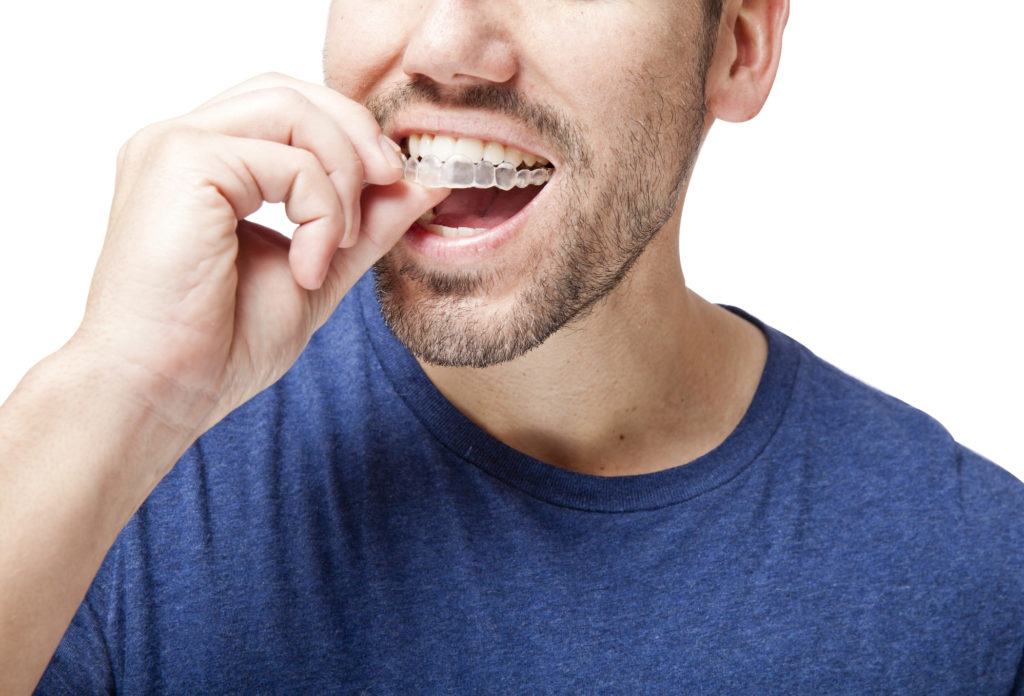
How Invisalign/Sterling Clear Aligners Works
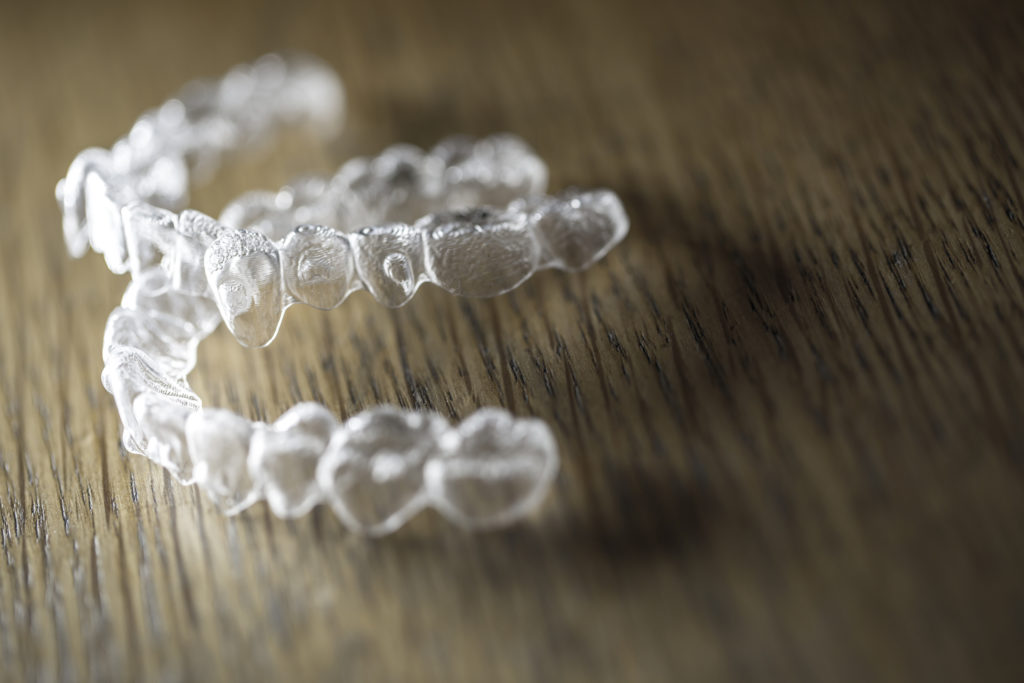
Invisalign/Sterling Clear Aligners shifts your teeth slowly over time using a series of trays. These trays are custom-created for individual smiles. Standard Invisalign/Sterling Clear Aligners treatments involve new trays every two weeks, with each tray encouraging a 0.25 mm movement of teeth. However, there is now advanced Invisalign/Sterling Clear Aligners treatment that promises faster results with a new tray every week.
Your job as an Invisalign/Sterling Clear Aligners patient is to use the trays each day. You may remove the trays to take care of dental care and oral hygiene like brushing and flossing but should wear them throughout the day. Invisalign/Sterling Clear Aligners braces are hardly noticeable to others, meaning you ’ll friends or coworkers might not even realize you’re wearing them.
What To Expect With Invisalign/Sterling Clear Aligners
First, set up an appointment with Dr. Joseph D. Parker at Yakima Orthodontics. He will assess your teeth by using dental photographs, x-rays, and other diagnostic tools. Then he will explain whether you are a candidate for Invisalign/Sterling Clear Aligners or not, and why.
Dr. Parker will take a digital 3D scan of your teeth to create your Invisalign/Sterling Clear Aligners “aligner” trays. Aligners are made of a patented thermoplastic design and are strong enough to help encourage your teeth to shift into proper alignment. Each new tray addresses one or two problems until you have the healthy, straight smile you were aiming for.
We will give you a set of trays when you start. You will return every six to eight weeks for an assessment of your progress, and to receive your next set of aligners. All treatments are individually based and depend on a variety of issues, such as:
- The severity of misalignment.
- Compliance with wearing aligners.
- Keeping up with your aligner.
- The mobility of your teeth.
Invisalign/Sterling Clear Aligners aligners are comfortable and easy to wear, offering no interference with your daily activities.

Invisalign/Sterling Clear Aligners For Teens & Adults

Invisalign/Sterling Clear Aligners braces are a great option for both teens and adults alike. Invisalign/Sterling Clear Aligners wearers appreciate the fact that the Invisalign/Sterling Clear Aligners braces are virtually invisible, removable and are more comfortable to wear since there are no metal wires or brackets.
Teens
For teens, Invisalign/Sterling Clear Aligners means they continue playing sports or participating in social events with confidence since Invisalign/Sterling Clear Aligners aligners are removable and nearly invisible. It also means they can have their smile improved up to two-times faster than other methods.
Adults
Adults will love they can eat their favorite foods and drink their favorite beverages while wearing Invisalign/Sterling Clear Aligners clear aligners. Simply remove your aligners, enjoy your food or beverage, brush your teeth, and place your Invisalign/Sterling Clear Aligners aligners back in. You’ll also love that brushing and flossing are easy since there are no metal brackets to navigate around.
Treatment for adults usually requires about 12 months or more of use while teen times can vary depending on factors, such as the type and severity of orthodontic treatment needed and compliance with wearing.
Invisalign/Sterling Clear Aligners Cost
The cost of Invisalign/Sterling Clear Aligners varies according to several factors. Dr. Parker and his staff will explain the factors affecting your cost of treatment with Invisalign/Sterling Clear Aligners, and help you determine whether your insurance will help with those costs and how much. Most dental insurance plans cover at least some portion of the cost of Invisalign/Sterling Clear Aligners braces.
We will also work with you to explore other options for payment, including utilizing tax-free dollars, such as flexible spending accounts (FSAs) and health savings accounts (HSAs), or the ability to make monthly payments.
Appliances
Orthodontic appliances are tools Dr. Parker may use to help braces straighten teeth or address other alignment issues more effectively. Some orthodontic appliances help to prepare your mouth for braces before your treatment begins, while others are used after braces treatment ends.
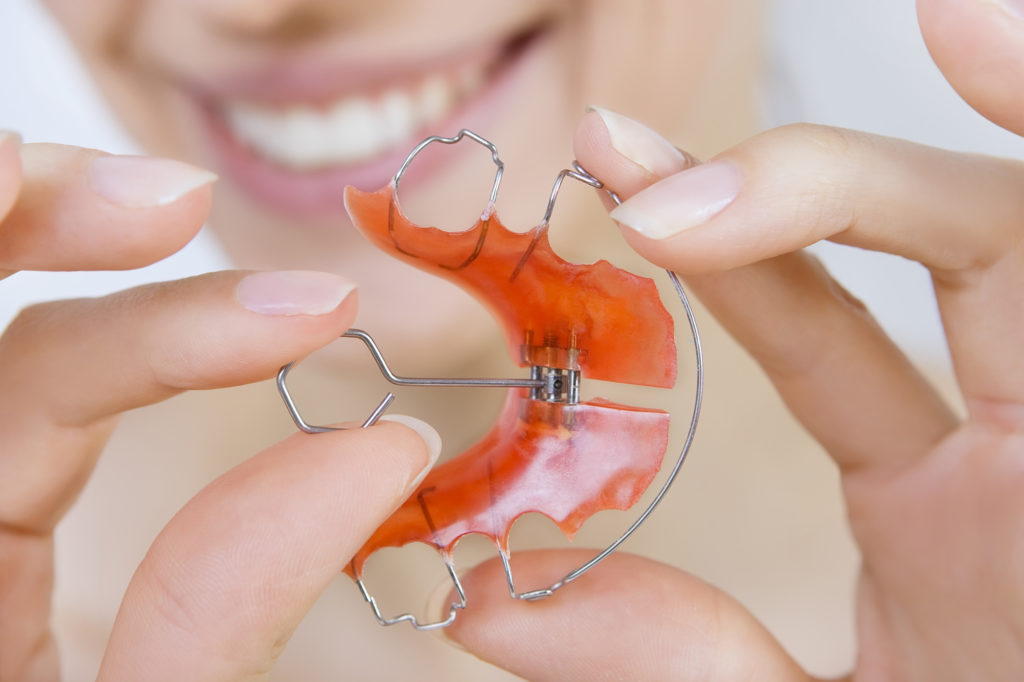
What Are Orthodontic Appliances For?
Orthodontic treatment often extends beyond the wires and brackets that serve to move teeth. The treatment itself goes far beyond what you see on the surface of the smile in that orthodontic appliances can help to reshape the face and jaw during the orthodontic treatment process.
Types of Appliances
There are several types of orthodontic appliance Dr. Parker may use to help you accomplish your goals of straighter teeth and a healthy, confident smile. Some appliances are fixed, meaning they cannot be removed or reapplied without the assistance of your orthodontist, while others are removable. These are some of the types of orthodontic appliance you may need to aid in the process.
Elastics
Removable elastic bands help to address bite issues while your braces are straightening your teeth. Dr. Parker attaches mounts at specific locations along your upper and lower brackets where you apply them daily. Dr. Parker may move the location of the mounts as your bite progresses along with the size of the elastics. Smaller elastics create greater pressure for fine-tuning. For an element of fun and fashion, elastics come in a variety of colors, and you can choose the colors you prefer.
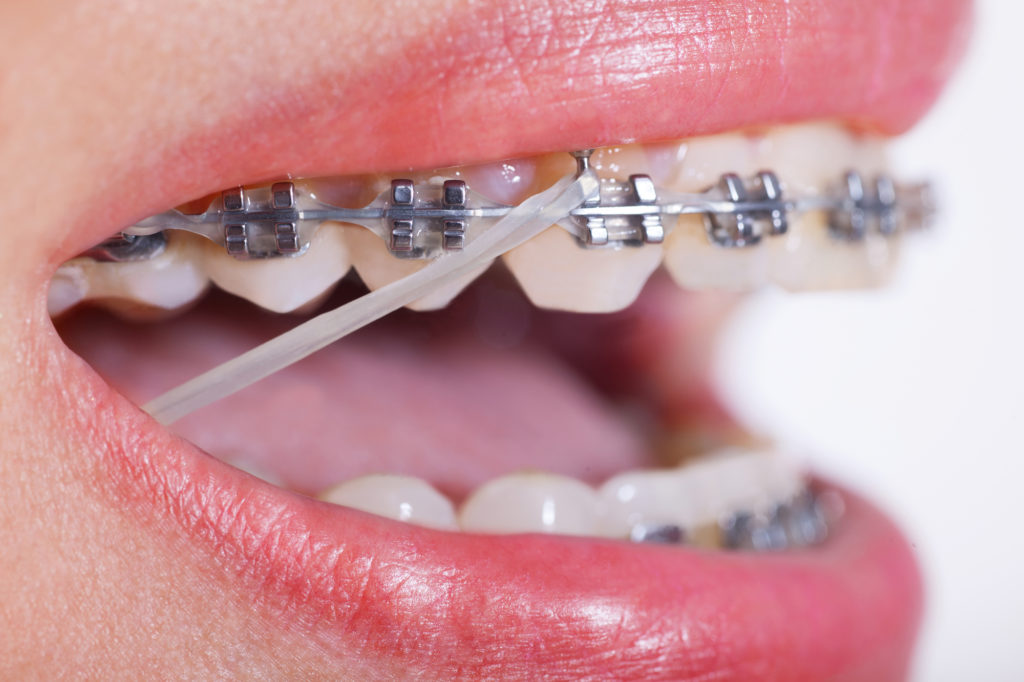

Headgear
Another removable device, the headgear addresses structural issues that would otherwise prevent the upper and lower teeth from fitting together. The headgear is usually only worn during the evening and overnight while sleeping so it doesn’t interfere with school, work, or social activities.
Palatal Expander
Fixed devices attached to your upper teeth, with cement, to widen the jaw and create space for crowded teeth. While the palate extender is turned daily over a period of two to four weeks (in most cases) to achieve the desired width, it remains in place five to ten months to help stabilize these changes. You will likely experience some pressure in your teeth, jaw, and nose when turning the expansion screws. This usually goes away within 30 minutes or so.
